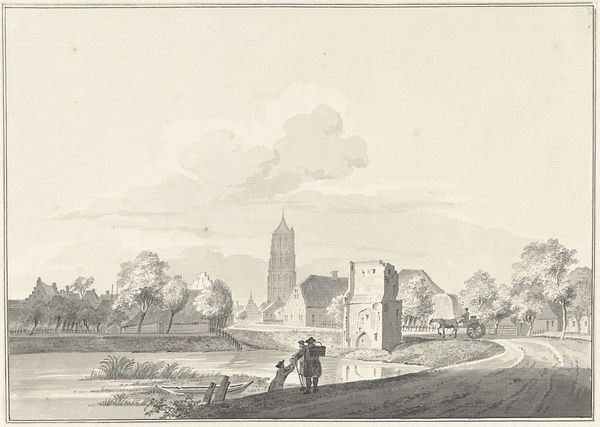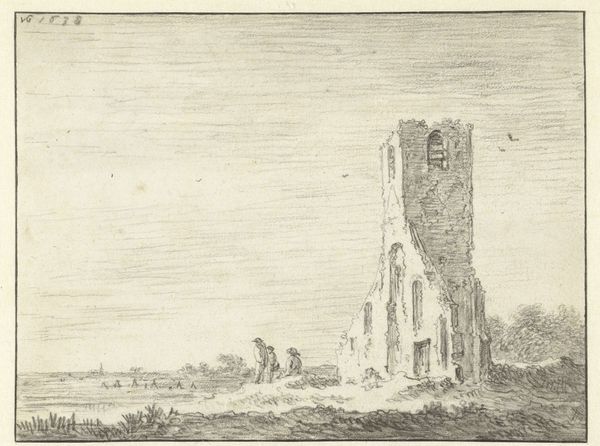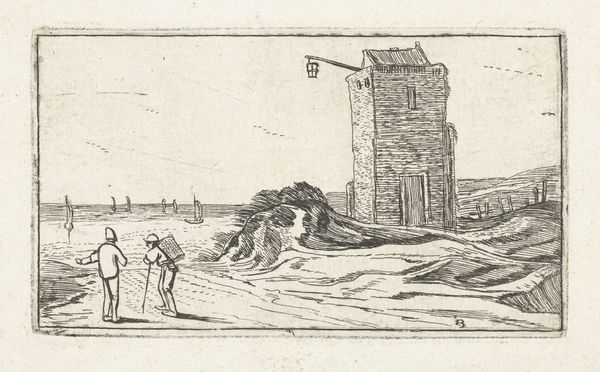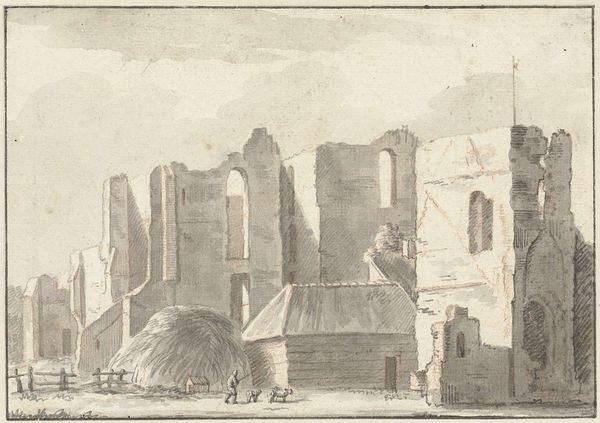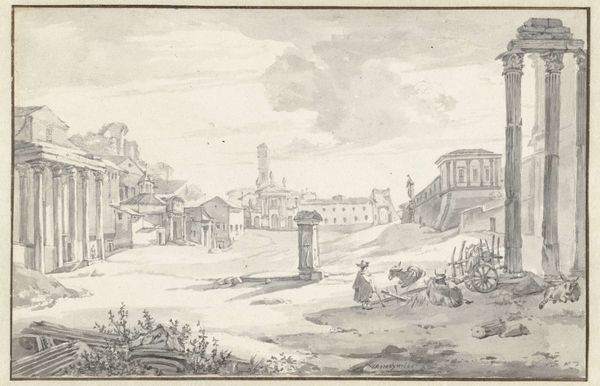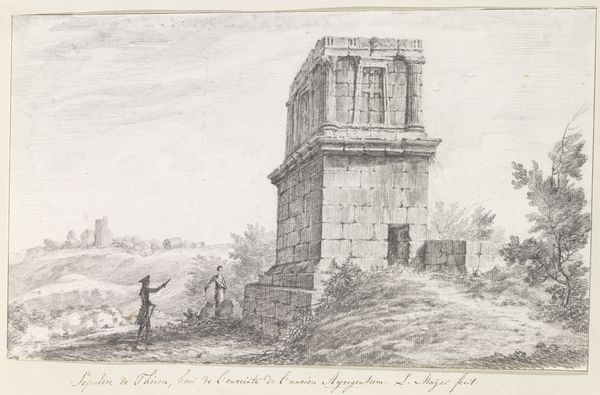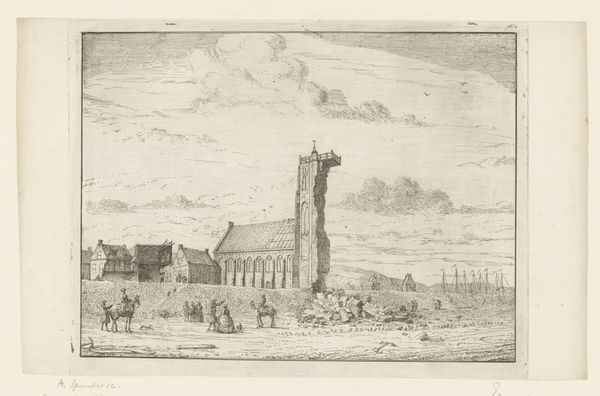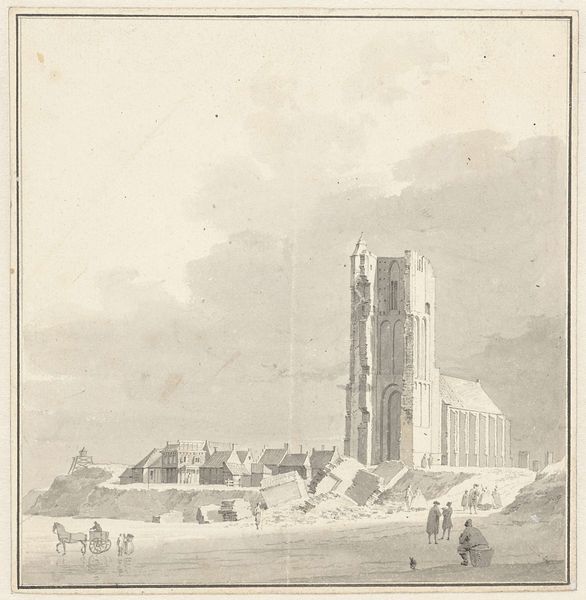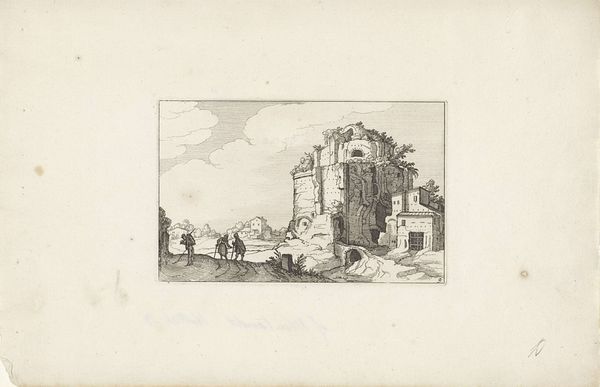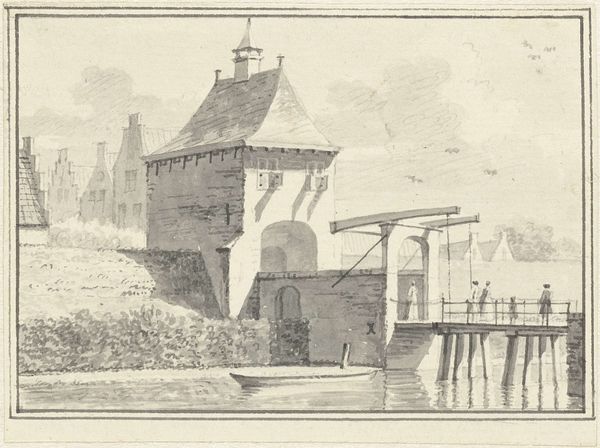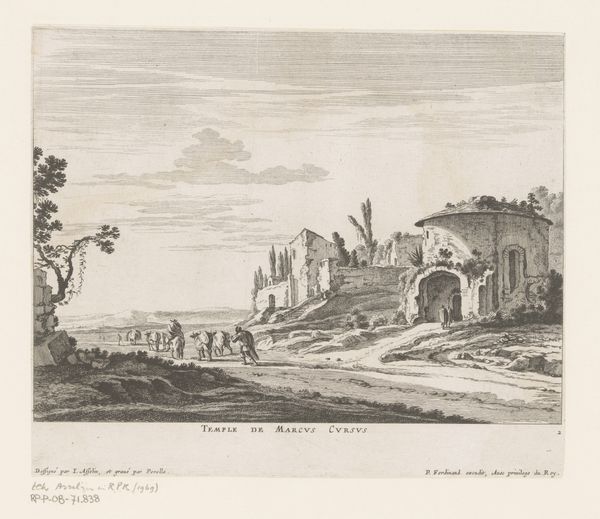
drawing, etching, engraving
#
drawing
#
quirky sketch
#
baroque
#
pen sketch
#
etching
#
old engraving style
#
landscape
#
personal sketchbook
#
sketchwork
#
pen-ink sketch
#
pen work
#
sketchbook drawing
#
storyboard and sketchbook work
#
sketchbook art
#
engraving
Dimensions: height 204 mm, width 308 mm
Copyright: Rijks Museum: Open Domain
Hendrik Spilman made this print of the ruined church tower in Egmond using etching, a printmaking technique that relies on acid to bite into a metal plate. It's a chemical process, but also a deeply social one. Consider how the fine, precise lines of the etching capture the rough texture of the ruined stone and the delicate play of light on the clouds. This wasn't just about depicting a scene; it was about transforming observation into something permanent and reproducible. Spilman's skill lies in his control over the etching process, guiding the acid to create the image he envisioned. Prints like this were part of a burgeoning visual culture, making views of the Dutch landscape available to a wider audience. The technique allowed for the creation of multiple copies, spreading images and ideas. In a sense, etching democratized art, moving it beyond the unique, hand-painted object and into the realm of mass production. It’s a reminder that even seemingly traditional art forms are deeply intertwined with social and economic forces.
Comments
No comments
Be the first to comment and join the conversation on the ultimate creative platform.
